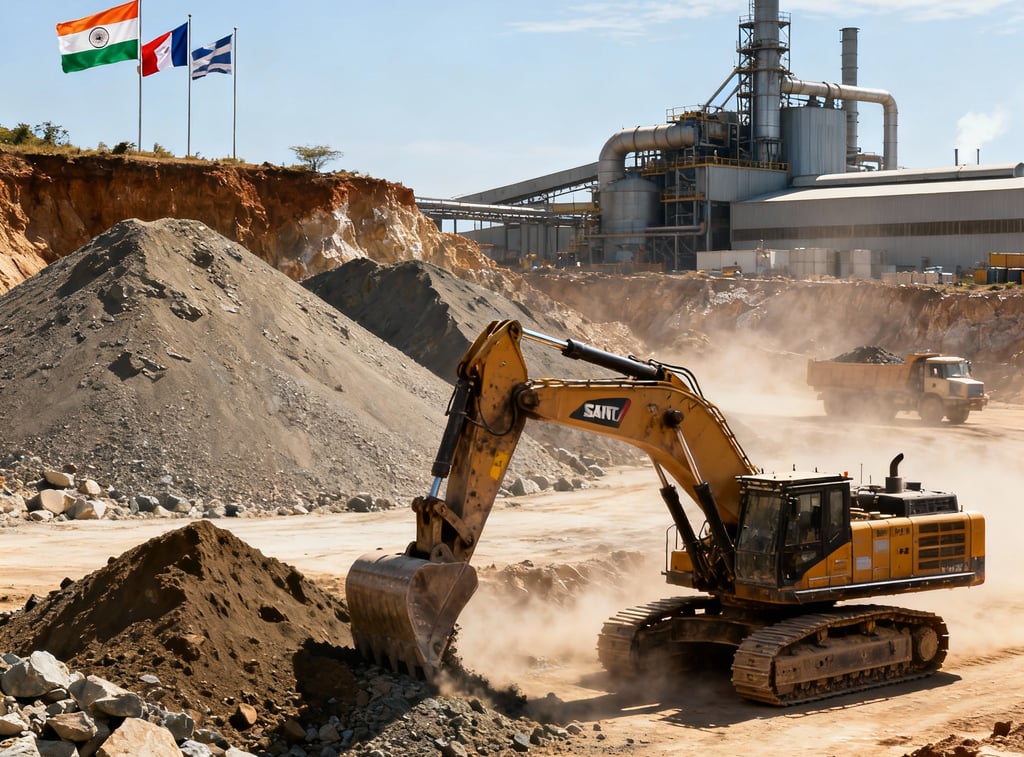PLI Scheme Needs 1,500 Tonnes of Rare-Earth Oxide Annually
Foreign mining firms have promised to supply rare-earth oxides for India's PLI scheme, which aims to boost local production of rare-earth magnets critical for industries like electric vehicles. India needs about 1,500 tonnes yearly, of which Indian Rare Earths Ltd (IREL) can provide around 500 tonnes; the rest will be imported.
MARKET NEWS
11/3/20252 min read


The Indian government recently received assurances from foreign mining companies that it would consistently supply rare-earth oxide for the forthcoming Production-Linked Incentive (PLI) program, which aims to promote domestic production of rare-earth permanent magnets (REPMs), which are crucial for industries like electronics, electric vehicles, and renewable energy.
Commitments by The Foreign Mining Companies
The government's call for long-term rare-earth oxide supply contracts has received good responses from major companies, such as Australia's Lynas Rare Earths, the UK's Rainbow Rare Earths, and Iluka Resources. These guarantees were given after the public sector organisation Bharat Heavy Electricals Ltd (BHEL) contacted roughly 20 foreign mining companies to confirm their ability and desire to provide rare-earth oxides. The overseas suppliers stated that they are willing to sign longer supply agreements and that their inventories may cover the anticipated demands of Indian magnet producers for a number of years.
PLI Scheme Details and Supply Gap
Five REPM units with a combined 6,000-ton annual production capacity will be eligible for capital and sales-based incentives totalling around ₹7,350 crore under India's PLI scheme, which is run by the Ministry of Heavy Industries (MHI). The nation will need about 1,500 tons of rare-earth oxides per year to reach this capacity. IREL (Indian Rare Earths Ltd.), a domestic producer in India, can currently supply 500 tonnes, meaning that 1,000 tonnes of imports are needed. In recent meetings, IREL announced that it is aiming to increase its output, which may lower the need for imports in the future.
Policy and Strategic Implications
While the PLI scheme aims to localise REPM production, India runs the risk of only shifting its reliance from finished magnets (primarily from China) to raw rare-earth oxides sourced from overseas. This is addressed by the government's efforts to secure supplies from foreign miners. China currently controls 90% of REPM production and a significant portion of global refining. Indian manufacturers have already been impacted by recent Chinese export restrictions, particularly in the automotive sector.
India is promoting both domestic beach sand mining and foreign mine acquisitions to diversify and expand rare-earth oxide sources in order to mitigate supply threats. State governments are awarding new mining contracts to private companies, and the Ministry of Mines is seeking alliances and negotiating memoranda of understanding with resource-rich nations such as Australia, Argentina, and Chile.
Industry and Government Collaboration
Leading mining companies and commercial conglomerates are among the industry participants actively taking part in the PLI consultations. In addition to offering financial incentives, the government intends to assist these PSUs and entrepreneurs through institutional processes and diplomatic outreach, making it simpler to import materials and acquire properties abroad.
Challenges Ahead
Despite these advancements, there are still issues with the competitiveness and quality of magnets manufactured from Indian raw materials because of their lower grades and higher prices, which could hurt global competitiveness if the problem of raw material supply isn't resolved. In order to reduce danger, the government is also investigating other magnet technologies and building up national reserves of vital minerals.
